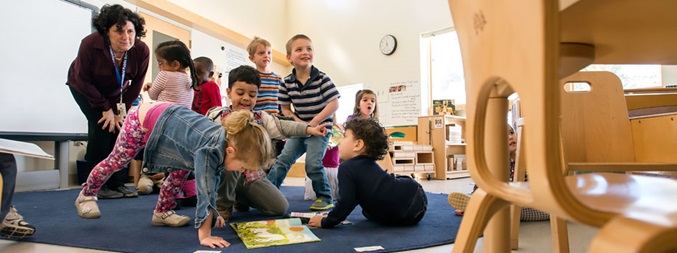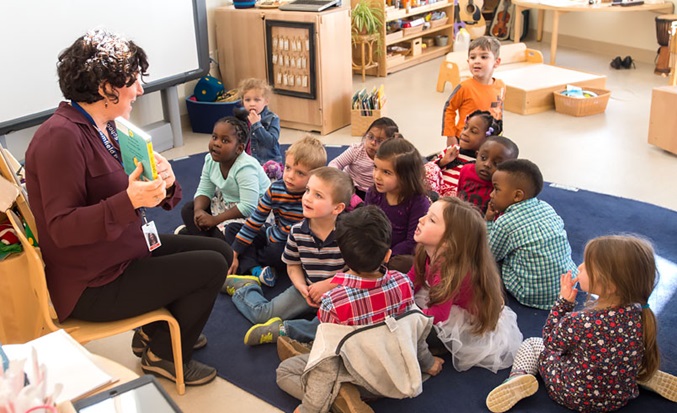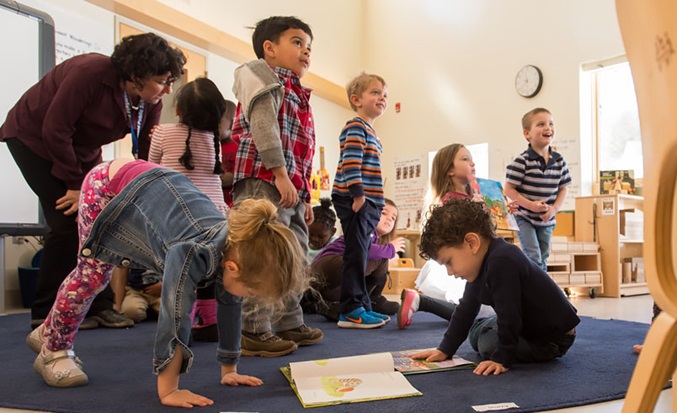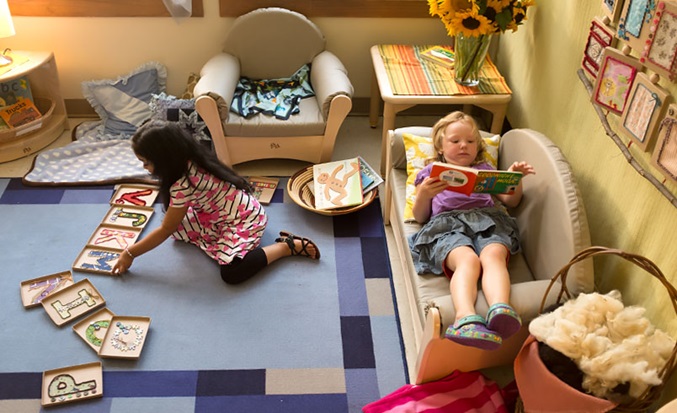Engaging Active Learners:
What Children Are Telling Us When They Won't Sit Still
| April 2017Children speak with more than just words. They express themselves in drawing, playing, laughing, crying, and simply moving. Sometimes we can read these behaviors fairly easily. For example, we probably have an idea what is being said when a child who just became a big brother or sister rocks a doll, or perhaps throws a doll behind a chair. We probably have an idea why a child is crying before we even have a chance to talk to them.
It is easy for most of us in the field of early learning to read body language when it puts us in the role of the caregiver. We want to calm or reassure the child who is upset. We want to laugh along with children who are playing. But when we are in the role of teacher, it’s not as easy. Then we tend to view children’s actions as disruptions. We don’t look for meaning behind behaviors such as fidgeting or moving around during story time or group time. We are too busy trying to meet our own identified “learning objectives.”
We must keep in mind that any goal we have for an activity is a learning objective, not a teaching objective. In other words, what’s most important is what children take from an activity, not the knowledge we impart. If children sit quietly while we read a book, we do not know if all the children listened to the book. In fact, the child who bounces up and down during an exciting plot twist is probably the one most focused on the book. Children don’t just listen with their ears. They show their understanding through whole body movements.
When we sit still, we tend to lose attention. The same is true for children. They need to move in order to stay engaged in the classroom, but teachers often ask them to sit down. Children learn more when they are moving, but we as teachers often worry about losing control. We need to ask ourselves, which is more important: an engaged learner who moves around or the teacher’s sense of control?
Before going any further, I should say that I think children should spend most of their day following their own ideas of play at a leisurely pace with much of that time outdoors. Right now, I am going to focus on times when children might be following a teacher-directed activity. This could be reading a book, group time, or a meal time.
Story Time
Sometimes when I read a book to my preschool class, a child will walk right up to the book to point out something in the illustration, or someone will jump up and talk excitedly about the book. At that moment I have to decide how I can latch on to this enthusiasm. My goal isn’t to make the child sit back down and bottle up that energy. At the same time, if I focus only on that child, I may lose the interest of the rest of the class.
Here are a few things I have said that worked:
- “Oh look, there is a frog on every page. Did anyone else notice that? (holding up the book around the child who is now standing in front) Can everyone see the frog on this page? I wonder where the frog is on the next page.”
- “You like worms just like Bree? Does anyone else like worms, too? What do you do when you find a worm? Let’s see what Bree does.”
- “You are really excited about the Wild Things. Where could you move like a Wild Thing that would let others see the book? (child stands behind the rest of the group) If anyone wants to move like a Wild Thing, Jo found a place in back.”
Group Activities
I try to focus my group times on things the children experience in their own lives. I want to find things that they can hold or experience. Here are a few examples:
- Children showed an interest in people in wheelchairs in the neighborhood. I rented a wheelchair for a week so they could look at it up close and try using it. Then they got a chance to ask a few people about their wheelchairs. The prior experience allowed them to ask more meaningful questions.
- When we were investigating coats, we had a bin of various types of coats. Meanwhile we used a loom, dyed fabric and did some basic stitching to have some experience with the steps to make a coat. Then we talked to a coat designer via Skype who showed us their workroom.
- When we talked about our families, we played a game where each child took a turn telling us a way they help their families and then we pretended to do the task while singing “I help my family…” (rather than simply having a conversation).
These are just a few examples of ways I have found to encourage children to be engaged and enthusiastic learners.
Play Time
When children are freely playing in a classroom setting, teachers often have a hard time with the children who seem to need to play extra vigorously. Here are a few things I discovered that help allow children the freedom to move and use their abundant energy.
- Stack chairs before play times. Children can get a chair if they want, but children can also stand at a table or sit on the floor. Chairs should not be the default.
- Create runways. There should be a place in the room where children can run during their play.
- If you have room, have a mat for boisterous big body play.
- Have a woodworking area. Using hammers, screwdrivers, and other tools allow children to build while also being physical.
- Have hollow blocks and empty appliance boxes. Both engage the body and mind as children move their whole bodies while creating.
This is just a few ideas, I am sure you can come up with many more. The important thing is to start listening to children’s actions. When they move or fidget, they are telling you that they need to move. This does not mean the learning needs to stop. It only means the teaching strategy needs to change.










